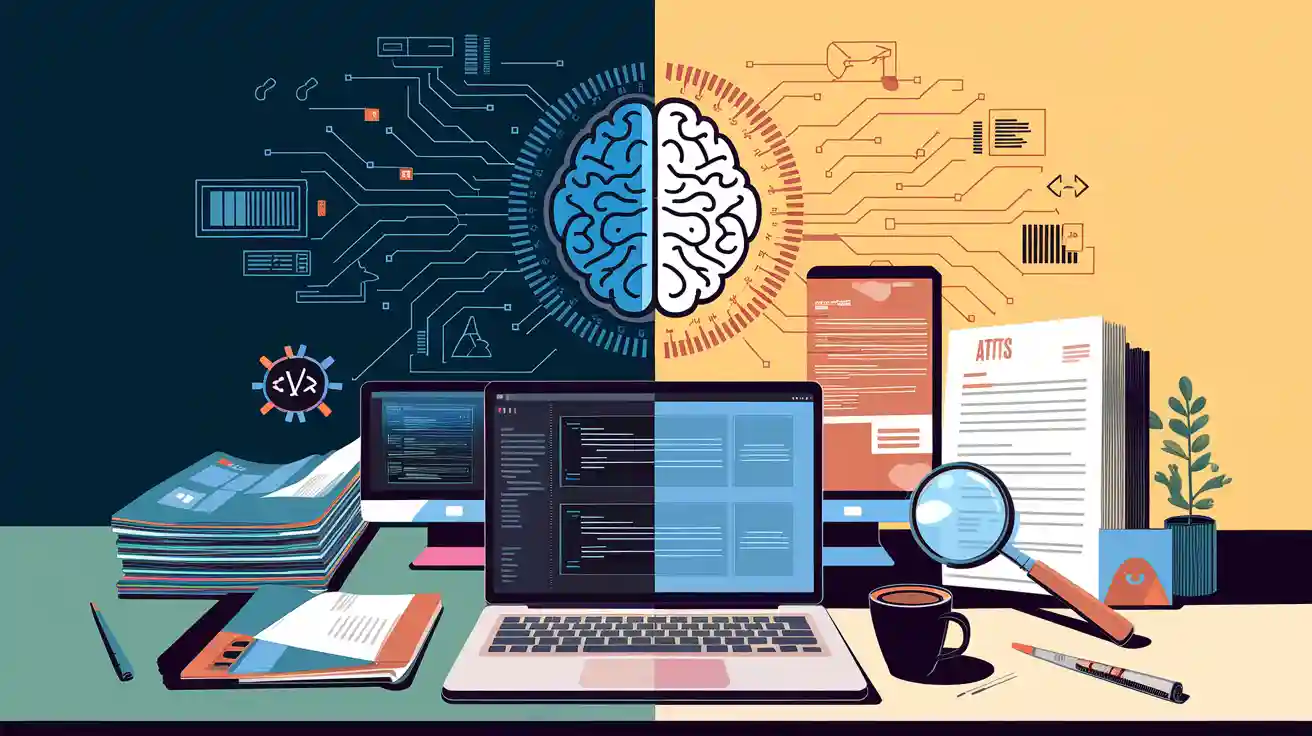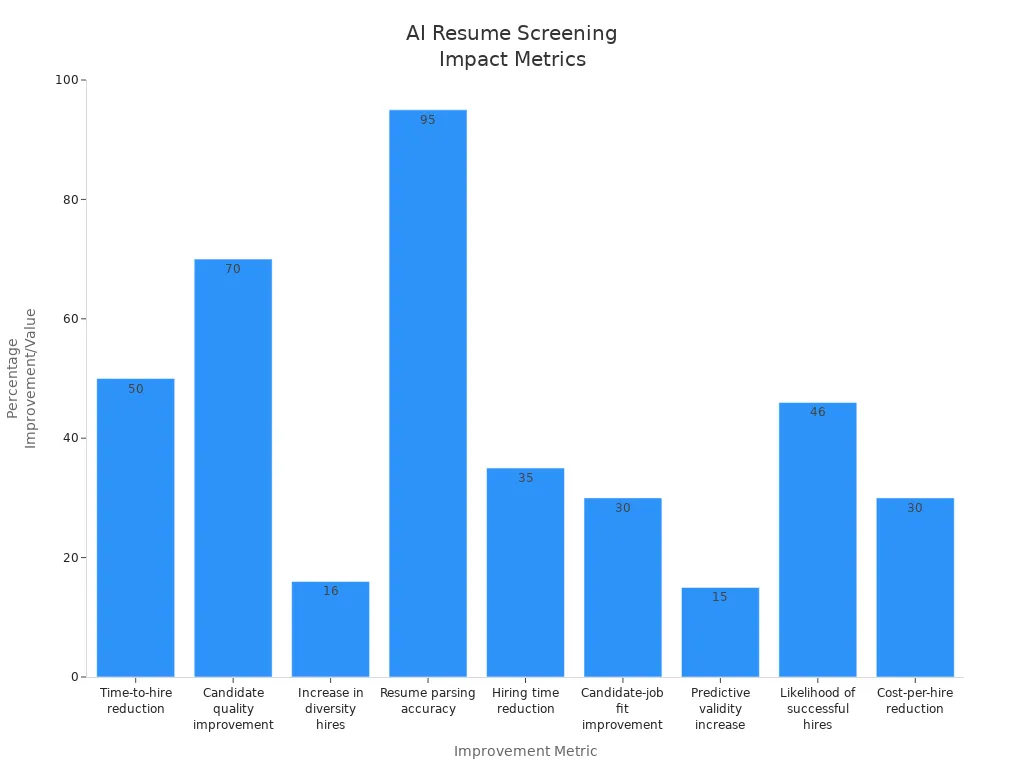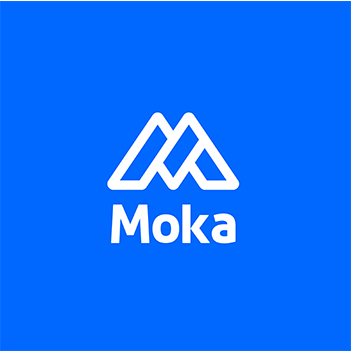AI-powered ATS vs Traditional ATS for Tech Startups

Tech startups gain significant advantages by choosing an ATS for Tech Startups: AI VS traditional systems. AI-powered applicant tracking systems enable hiring up to 70% faster, and recruiters perform 50-60% more efficiently compared to traditional ATS solutions. The table below highlights why many tech startups prefer AI over traditional ATS for Tech Startups: AI VS traditional:
Decision Factor | AI-powered ATS for Tech Startups: AI VS traditional | Traditional ATS for Tech Startups: AI VS traditional |
|---|---|---|
Efficiency | Automates hiring tasks, saves time | Manual processes, slow |
Accuracy | Reduces bias, improves candidate match | Prone to human bias |
Cost | Cuts hiring expenses | Higher costs per hire |
Candidate Experience | Flexible, responsive communication | Friction and longer wait times |
Scalability | Handles rapid growth easily | Struggles with high volumes |
However, when considering ATS for Tech Startups: AI VS traditional, it’s important to note that AI-powered systems can sometimes overlook unique candidates due to technical limitations. Automated rejections may also frustrate applicants. Moka stands out as a leading ATS for Tech Startups: AI VS traditional, offering robust automation and improved hiring outcomes.
Ats for tech startups: AI vs traditional
traditional ats overview
Tech startups usually begin hiring with traditional ats. These systems help post jobs and keep track of applicants. They also organize resumes for easy review. Many traditional ats are simple to set up and connect with Slack, LinkedIn, or email. Startups like them because they are easy to learn and have good support. The table below shows the main features of traditional ats for tech startups:
Feature Category | Description |
|---|---|
Ease of Use | Easy to learn, quick training, helpful guides, and support. |
Implementation & Integrations | Fast setup and ready-made connections to Slack, LinkedIn, and email. |
Scalability | Can grow with the business, but may have limits as hiring grows. |
Pricing | Flexible and affordable, sometimes even free. |
Branding | Lets companies make career pages that show their brand. |
Applicant Communication | Sends automatic updates and messages to candidates. |
Tech Support | Gives strong support for startups. |
Advanced Features | Has some automation, analytics, and ways to change workflows. |
Scheduling Tools | Has tools to set up interviews and meetings. |
Video Interview Integrations | Connects with video tools or has built-in video interviews. |
Workflow Customization | Lets teams change workflows as hiring needs change. |
Additional Notes | Some need skilled recruiters, can be hard to learn, and prices are not always clear. |
Traditional ats often let recruiters do video interviews in the system. They can be one-way or live interviews. Automated messages, like chatbots or emails, keep candidates interested and save recruiters time. Some platforms add games or skill tests to make hiring more fun. These features help startups hire faster and give candidates a better experience.
But traditional ats and old hiring tools use a lot of manual work. Recruiters must read resumes, look for keywords, and set up interviews by themselves. This can slow down hiring as the company gets bigger. Traditional ats also have trouble with things like portfolios or social media profiles. Because of this, startups may find it hard to hire quickly as they grow.
AI-powered ATS overview
AI-powered ats for tech startups: ai vs traditional are a new way to hire. These systems use machine learning and natural language processing to make hiring easier. AI recruiting software can check resumes, find candidates, set up interviews, and guess who will do well in a job.
The table below shows how ai-powered ats for tech startups: ai vs traditional are different from traditional ats:
Core Functionality | AI-Powered ATS (Ashby, iCIMS) | Differentiation from Traditional ATS in Tech Startups |
|---|---|---|
Recruiting CRM | Manages talent pools and finds passive candidates. | Traditional ats do not have built-in CRM; ai-powered ats help build relationships. |
AI-Assisted Automation | Uses AI to write emails, summarize notes, and check resumes. | Automates boring tasks, so recruiters get more done. |
Analytics & Reporting | Gives useful data, like pipeline numbers and best practice tips. | Traditional ats only give basic reports. |
Scheduling Tools | Makes it easy to set up interviews and lets candidates pick times. | Makes things smoother for everyone and saves time. |
Platform Integration | Combines ats, CRM, scheduling, and analytics in one place. | Stops teams from using too many tools or old systems. |
AI Matching & Recommendations | AI suggests candidates and jobs, making hiring up to 50% faster. | Traditional ats do not have smart matching. |
Compliance & Enterprise Features | Has strong tools for rules and safety, like EEO and GDPR. | Traditional ats may not have all these features. |
AI-powered ats do more than just track candidates. They use smart algorithms to check resumes. These systems can read things like social media profiles and portfolios, which traditional ats cannot do well. AI recruiting software quickly picks top candidates using natural language processing and pattern matching. This saves time and helps avoid bias.
AI-powered ats also make candidate messages personal. They send updates and reminders to keep applicants in the loop. Predictive analytics help see if a candidate will fit the job and company. Cloud dashboards let teams work together at the same time, so decisions are faster. Automated checks make sure everything is fair and ready for audits.
Many tech startups see big results with ai-powered ats. For example, Unilever cut hiring time from 27 days to 7 days and hired better tech workers. Google’s ai recruiting software made hiring 20% faster and helped people stay longer. These results show that ai tools make hiring quicker, smarter, and more based on data.
Tech startups that want to grow fast and hire the best people often pick ai-powered ats for tech startups: ai vs traditional. These systems do boring tasks for you, help avoid bias, and give useful tips, so startups can hire better.
Efficiency and Speed
Automation with AI-powered ATS
AI-powered ats help tech startups hire faster by doing many tasks automatically. These systems use ai recruiting software to check resumes, find good candidates, and set up interviews without people needing to help. Job ads go to many websites right away, so more people see them. AI-powered ats use chatbots to answer questions and talk to candidates at any time.
Recruiters get help from smart resume tools and better search features. These tools find top candidates, not just those with the right words in their resumes. AI-powered ats use data to guess who will do well and stay longer at the job. Teams can see reports and change their plans quickly. This means startups can do lots of interviews at once and hire more people without waiting.
AI recruiting software helps stop bias by using the same rules for everyone. Candidates hear back faster, so fewer people quit waiting. Startups see that hiring takes less time and costs less money, sometimes saving 20%. Using automation, data, and the ability to grow fast gives tech startups a big edge in saving time and money.
Manual Tracking in Traditional ATS
Traditional ats make people do every step by hand. Recruiters or founders must look at each application, sort resumes, and set up interviews themselves. This makes hiring slow, especially when lots of people apply. Manual tracking in traditional ats can cause delays, so good candidates may take other jobs.
Old hiring tools need a lot of time and work to sort, schedule, and talk to candidates. These jobs are hard to do quickly when hiring more people. Without the help of ai-powered ats, traditional ats slow things down and cost more. Recruiters spend more time on paperwork and less on finding the best people.
Manual checks in traditional ats can have mistakes and bias. There are no fast reports, so it is hard to see what is working. Traditional ats might be okay for small or special jobs, but they cannot keep up with fast-growing tech startups. Because of this, startups using traditional ats take longer to hire and spend more money than those using ai recruiting software.
AI-powered resume screening

Candidate Ranking
AI-powered ats change how tech startups pick top talent. These systems use smart computer programs to look at candidate profiles, resumes, and job descriptions. They do more than just search for keywords. AI-powered ats make number models that show what each candidate wants and how they match the job. This helps startups find the best person for every role.
Automated screening lets recruiters handle lots of applications fast. AI-powered ats use machine learning and natural language processing to check experience, skills, and even if someone fits the company culture. They can also look at code samples and portfolios, which is important for tech jobs. Automated resume screening puts candidates in order by their potential, not just how their resume looks.
AI-powered ats let recruiters spend time on important tasks by doing boring work for them. This means hiring is faster and the people hired are better.
The table below shows how ai-powered resume screening is better than manual methods:
Screening Method | Time Taken (per 100 resumes) | Accuracy Rate |
|---|---|---|
Manual Screening | 10 hours | 70% |
AI-Powered Screening | 1 hour | 95% |
This table shows that ai-powered ats cut screening time by 90% and make accuracy 25% better. Startups get faster and more correct candidate choices.

Bias Reduction
AI-powered ats help lower bias when screening candidates. These systems use facts and skip details like age or where someone is from. By using automated screening, tech startups can make hiring fair and help with diversity goals.
AI-powered ats use data to judge candidates. They do not look at names, gender, or addresses. This lowers bias and helps build a more mixed team. Studies show that ai-powered ats can make teams 35% more diverse. They also help companies hire 16% more people from different backgrounds, like Unilever did.
But ai-powered ats need updates and checks to stop new bias from training data. Tech startups should pick vendors who show how their systems work and let people check them. If managed well, ai-powered ats help make candidate screening fair, correct, and fast, so startups can hire great people.
Scalability and Adaptability
Growth with AI-powered ATS
Tech startups change fast and often need to hire quickly. AI-powered ats help them grow without slowing down or losing quality. These systems can handle thousands of job posts and applications at the same time, so startups do not worry about things getting slow.
AI-powered ats look at resumes in just a few minutes, so finding people is up to 75% faster.
Doing the same tasks over and over is done by the system, saving teams 23 hours for each person they hire.
Teams can change how the system works to fit new hiring needs.
The system connects with HR tools, job boards, and chat apps, so growing is easy.
AI-powered ats use smart math to guess who will do well, and they are right 85% of the time.
Dashboards are simple to use, and teams learn them quickly.
The system sets up interviews and tests by itself, so more people can be seen.
Teams get live data to help them make better hiring plans as they grow.
The cost changes with how many people are hired, so it stays fair when the company gets bigger.
AI-powered ats help startups hire faster, smarter, and in more ways. Startups can fill jobs 60% quicker, which saves money and helps them grow fast.
Limitations of Traditional ATS
Traditional ats have trouble when startups need to hire a lot of people. These systems slow things down because people must do everything by hand.
Traditional ats do not connect well with other HR tools, so it is hard to keep track of hiring.
Without good data, startups cannot see what works or where things get stuck.
Candidates wait longer for answers, and the best ones may leave.
Old hiring tools do not have good tests or ways to keep in touch with candidates, so hiring is not as good.
New startups using traditional ats often do not have a plan, so interviews are not the same and choices are not always good.
Messy hiring makes founders waste time and makes the company look bad.
It is very hard to build a good hiring system with little money or help.
Traditional ats might be okay for small groups, but they cannot help fast-growing startups hire lots of people or change quickly.
Candidate Experience
Personalization with AI
Tech startups want to make hiring better for candidates. AI-powered ats help by using smart tools to make each step special. These systems send messages that fit each person and give feedback right away. They also match people with jobs that fit their skills and interests. Recruiters use AI-powered ats to check resumes and set up interviews automatically. This gives them more time to talk to candidates and less time doing paperwork.
Companies like Lever and Unilever saw a 30% rise in how happy candidates felt after using AI-powered ats. Candidates get updates and feedback quickly, which helps them trust the company and stay interested. AI-powered ats use chatbots to answer questions and help candidates through the steps, making things easier. Teamtailor’s tools let recruiters share feedback, so decisions are better and every candidate has a good experience.
AI-powered ats make hiring up to 50% faster, so candidates get answers sooner.
Special job suggestions help people find jobs that fit what they want.
Chatbots give help right away, making things less stressful for candidates.
Companies using AI-powered ats see 70% more candidate interest and 25% better hires.
Airbnb got 30% more candidate interest after adding personal messages and online tours. Unilever used both AI and video interviews, which made hiring 75% faster and made candidates 20% happier. These results show that AI-powered ats help tech startups hire quickly and still treat people well, giving candidates a better experience.
Standardized Process in Traditional ATS
Traditional ats use a set way to hire people. They use interview scorecards, the same questions, and clear rules to judge everyone. This helps recruiters compare people fairly and look at skills and if they fit the company. Traditional ats also send messages and set up interviews automatically, making things neat and easy for everyone.
Interview scorecards in traditional ats show what each person is good at.
The same questions make sure everyone gets a fair chance.
Clear rules help stop bias and make screening better.
Most candidates like the clear steps and quick updates from traditional ats. Surveys say 95% of people would apply again after a good experience with these systems. Recruiters say hiring is faster and talking to candidates is better, so more people stay interested.
But sometimes, traditional ats make people feel like just a number. Strict filters can miss good candidates, and too much automation can feel cold. This can upset people and make it harder to find different kinds of workers, which is important for tech startups. While traditional ats are fair and work well, they may not give as good an experience as AI-powered ats.
Moka ATS Comparison
Speed and Efficiency
Moka’s ai-powered ats helps tech startups work faster. The system checks resumes in just a few seconds. Recruiters do not spend much time on boring tasks. Moka sends updates to candidates right away. Teams can post jobs to many sites at once. This brings more people into the system quickly. Moka lets recruiters set up interviews and send reminders easily. The platform keeps hiring moving, even with lots of candidates.
Matching Accuracy
Moka’s ai-powered ats uses smart math to match people. The system looks at skills, experience, and job fit for each person. It puts the best matches at the top of the list. This helps recruiters find the right person faster. Moka uses data from resumes, tests, and interviews to match better. The platform learns from old hires to make smarter picks. Recruiters trust Moka to show the best people first. This makes hiring better for tech startups.
Cost-effectiveness
Tech startups save money with Moka’s ai-powered ats. The system does boring work, so teams spend less time hiring. Moka’s prices work for growing companies. Startups pay for what they use. The platform’s tools make each hire cost less. Recruiters fill jobs faster, so open roles do not cost as much. Moka helps teams avoid bad hires, so quality stays high. The system gives clear reports on spending and results.
Scalability
Moka’s ai-powered ats grows with tech startups. The platform can handle hundreds or thousands of people at once. Teams add new jobs without slowing down. Moka keeps data safe and neat as the company gets bigger. The platform works for more users and more candidates with no slowdowns. Recruiters can change how they hire to fit new needs. Moka’s ai-powered ats helps startups hire more people without losing control or quality.
Moka’s ai-powered ats gives tech startups tools to hire faster, find better people, and grow with confidence.
Making the Choice
Key Considerations
Tech startups need to think about many things before picking an applicant tracking system. The choice between ai-powered ats and traditional ats depends on how many people you want to hire, if you need things done automatically, and what kind of experience you want for candidates. The table below shows the main things to think about for both options:
Key Consideration | AI-powered ATS | Traditional ATS |
|---|---|---|
Recruitment Needs | Best for bigger or fast-moving companies that need automation and quick matching | Good for smaller teams or simple hiring needs |
Candidate Matching | Uses machine learning and natural language processing for fast, accurate matching | Uses manual keyword matching, which is less exact |
Efficiency | Automates resume checks and interview setup, saving recruiters time | Manual steps, so screening is slower |
Bias Reduction | Can lower human bias by using facts, but might have bias from the computer | Can have human bias, but no computer bias |
Customization | Might take more work to fit special needs | Easier to change for certain jobs or industries |
Candidate Experience | Gives a more friendly and personal experience | Often has old designs and hard-to-use forms |
Cost | Usually costs more, but saves money with automation | Costs less at first, but can cost more to keep running |
Human Interaction | Less human contact at first, might use tech too much | More people involved the whole time |
Data Visibility | Connects to outside data for full candidate profiles | Does not connect as much, so less info on candidates |
Startups should use both automation and people. Using ai-powered ats to screen, then letting people review, helps find good candidates and keeps things fair.
When to Choose AI-powered ATS
Tech startups that are growing fast or need to hire lots of people do best with ai-powered ats. These systems do boring jobs like checking resumes and setting up interviews, so recruiters can talk to candidates more. Ai-powered ats are great when startups need to hire quickly and still want good workers. They use smart tools to match candidates and help make choices based on data. Ai recruiting tools also make things easier for candidates with automatic messages and online helpers. Startups that want to hire a mix of people and work faster should think about ai-powered ats to get better results and look good to job seekers.
Handles lots of applications and finds the right people
Helps stop hidden bias and supports hiring different kinds of people
Uses smart data to help make better choices
Makes things easier for candidates with quick messages
When to Choose Traditional ATS
Traditional ats are good for startups with small teams or easy hiring needs. These systems let people talk more during hiring, which helps see if someone fits the team. It is easier to change these systems for special jobs or industries, and they can cost less for small budgets. Traditional ats work well when you want to check each person by hand and do not have too many people applying. Startups that want a simple, hands-on way to hire may like traditional ats better.
Good for startups with few hires and simple steps
Lets recruiters meet and judge candidates themselves
Easier to change for special jobs or fields
Costs less at the start, good for small budgets
Keeps a personal touch when talking to candidates
Tech startups get the most help from AI-powered ATS when they need to hire more people. These systems do screening by themselves, help stop bias, and find better candidates. Founders should know what kind of hiring they need, make their company look good to workers, and pick ATS platforms that can grow with them. Picking an ATS that matches the company’s plans and future growth helps hiring go smoothly.
Moka is special because it has smart AI tools, is used by many, and customers like it a lot.
If startups want to hire faster, more accurately, and grow easily, looking at Moka’s ATS is a smart way to get better hiring results.
FAQ
What is the main difference between AI-powered ATS and traditional ATS?
AI-powered ATS uses machine learning to check resumes and match candidates. Traditional ATS needs people to look at resumes and search for keywords. Tech startups hire faster and make fewer mistakes with AI-powered systems.
Can AI-powered ATS reduce hiring bias?
AI-powered ATS looks at facts when checking candidates. The system does not use names, gender, or addresses. This helps tech startups build teams with different kinds of people and be fair.
Is it hard to switch from a traditional ATS to an AI-powered ATS?
Most AI-powered ATS platforms have tools to help you switch. Teams can move candidate data and job posts easily. Training helps recruiters learn new features fast.
Does an AI-powered ATS cost more than a traditional ATS?
AI-powered ATS usually costs more at first. Automation saves time and lowers hiring costs later. Startups pay for what they use, so they can control spending.
How does Moka ATS support tech startups as they grow?
Moka ATS grows with the company. The platform handles more jobs and candidates without slowing down. Recruiters can change workflows and use smart data to hire better.
See Also
Boost Startup Hiring Efficiency With MokaHR’s ATS Solutions
Comprehensive Guide To Using ATS For Recruiting Talent
Essential Strategies To Improve The Performance Of ATS
Best Practices For Spotting Top Candidates With ATS Tools
Leveraging Data To Streamline Onboarding Through ATS Platforms
From recruiting candidates to onboarding new team members, MokaHR gives your company everything you need to be great at hiring.
Subscribe for more information

